Last Updated on July 29, 2023 by Leonard Harper
Rabbit behavior can often seem mysterious and complex, but with careful observation and understanding of their body language, we can gain insights into what these intelligent creatures are trying to communicate.
Being social animals, rabbits exhibit a wide range of behaviors that help them interact with their environment, other rabbits, and even humans. Many of these actions have evolved to ensure their safety, well-being, and ability to thrive in different situations.
Rabbit behavior can vary greatly based on factors such as age, breed, and environment, but there are some general patterns and actions common to most rabbits.
For instance, rabbits display various playful behaviors when they are happy and content, such as binkying, which is a form of joyful jumping indicative of excitement and satisfaction. This is in contrast to signs of aggression or fear, where their body language might indicate a need for space or protection.
- Key Takeaways
- Typical Daily Behavior: Sleep, Eat, Play
- The Rabbit's Senses: Seeing, Hearing, Smelling, and Feeling
- Grazing and Foraging Behavior
- Dietary Preferences and Their Influence on Behavior
- Playing and Bonding
- Nudging and Licking
- Hopping and Binkying
- Boxing and Lunging
- Growling and Grunting
- Marking Territory
- Tooth Grinding and Droppings
- Rabbit Vocalizations and Flopping
- Fur and General Health
- Recognizing Illness through Changes in Behavior
- The Effect of Spaying on Rabbit Behavior
- Litter Training and Box Habits
- Toys and Enrichment
- Proper Rabbit Housing
- Understanding Rabbit Language: Visual, Auditory, and Tactile Signals
- Social Structure and Hierarchies in Rabbit Colonies
- Bonding and Mating Behaviors
- Courtship and Mating Rituals
- Nesting and Parental Care Behavior
- Impact of Housing Conditions on Behavior
- The Role of Enrichment in Promoting Healthy Behavior
- Breed-Specific Traits and Behaviors
- Selecting the Right Rabbit Breed Based on Behavior
- Changes in Behavior as Rabbits Age
- Special Considerations for Senior Rabbits
Key Takeaways
- Rabbit behavior can be complex, but understanding their body language helps us communicate with them effectively.
- Rabbits display a wide range of behaviors including playfulness, aggression, and fear in response to different situations.
- Factors such as age, breed, and environment can influence rabbits’ behavior, making it essential to be observant and empathetic to their needs.
General Rabbit Behavior
Typical Daily Behavior: Sleep, Eat, Play
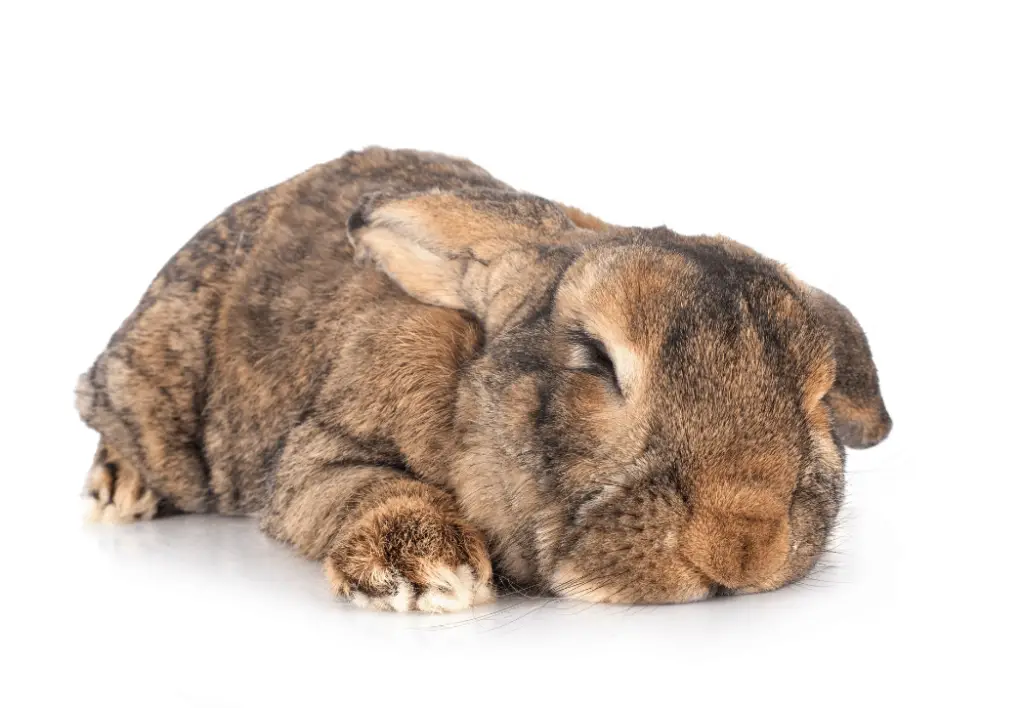
Rabbits are crepuscular animals, which means they are most active during the early morning and late evening hours. They tend to sleep during the day and night, often finding a quiet and comfortable spot to rest. It is common for rabbits to sleep with their eyes open, as it allows them to stay alert to potential dangers.
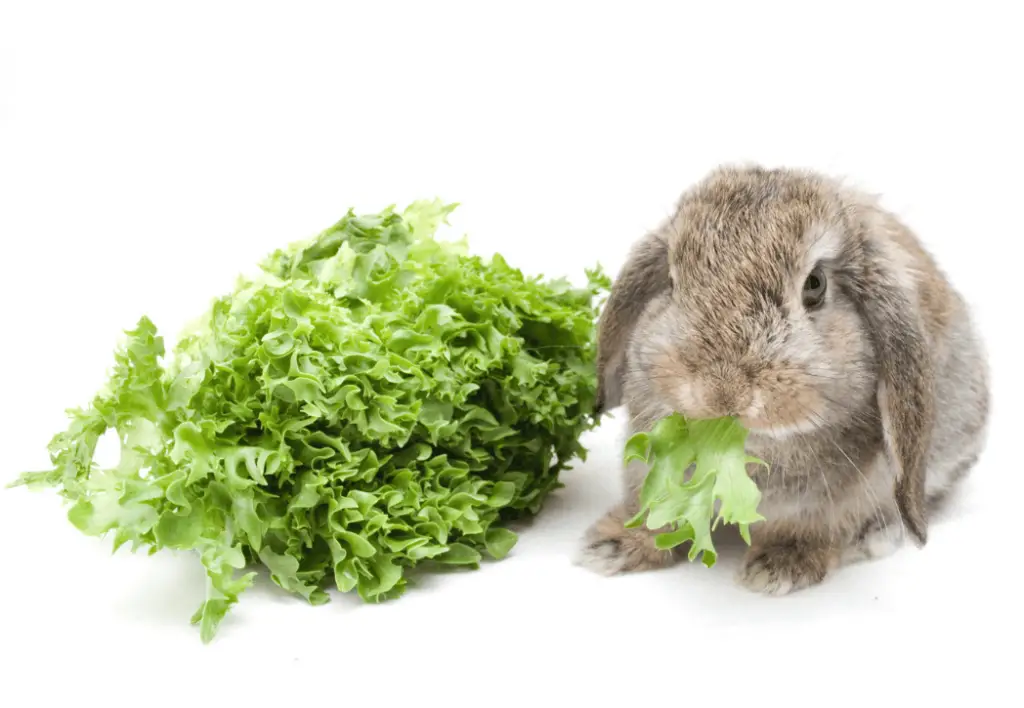
Eating is an essential part of a rabbit’s daily routine. They have a delicate digestive system that requires a diet high in fiber, such as hay. Rabbits also enjoy fresh vegetables, fruits, and pellets as a supplement. A rabbit’s diet plays a crucial role in keeping its teeth healthy and preventing digestive issues.

Play is important for keeping rabbits physically and mentally stimulated. They love to explore their environment and engage in activities like running, jumping, and digging. Providing a variety of toys and a safe space for them to play allows rabbits to exhibit their natural behaviors and remain happy.
The Rabbit’s Senses: Seeing, Hearing, Smelling, and Feeling
Rabbits have unique sensory abilities that help them interact with their environment and avoid potential threats. Their vision is adapted for detecting motion and seeing in dim light. Rabbits have a wide field of view due to the positioning of their eyes on the sides of their head. However, this leads to a small blind spot directly in front of their nose.
Hearing is a critical sense for rabbits, as they have large ears with a wide range of motion. This enables them to detect sounds from all directions and pinpoint the source, alerting them to potential predators or other dangers.
The sense of smell is vital for rabbits in various ways, from communication to finding food. With their strong smelling abilities, they can detect nearby predators, identify other rabbits, and locate their favorite snacks. Rapid nose twitching is common when they encounter new scents, indicating curiosity.
Rabbits also rely on their sense of touch to navigate their surroundings and communicate. Their whiskers, or vibrissae, help them feel their way in tight spaces and dark areas. Additionally, rabbits use touch to groom each other and strengthen social bonds within their groups.
Feeding Behavior

Grazing and Foraging Behavior
Rabbits are herbivores, which means they feed primarily on plant materials. They have specific grazing and foraging behaviors to obtain their food. Rabbits are crepuscular animals, meaning they are most active during dawn and dusk. During these times, they tend to spend a significant portion of their time foraging for food in their environment.
Rabbits have an innate ability to identify the most nutritious parts of plants, such as fresh leaves, buds, and grasses. They prefer to feed on short vegetation, often utilizing a hopping and sitting pattern while eating. This allows them to be more aware of their surroundings and potential predators while feeding.
Dietary Preferences and Their Influence on Behavior
The dietary preferences of rabbits play a crucial role in their behavior. They follow a diet that is high in fiber, low in protein, and low in energy. Their natural diet consists of a variety of grasses, leaves, and some roots. Rabbits have complex digestive systems and are selective in their feeding choices to ensure they consume the right balance of nutrients for their overall health.
Consuming high-fiber foods helps rabbits maintain their gut health and avoid digestive issues. One unique aspect of their feeding behavior is the consumption of cecotropes, a special type of fecal pellet, rich in nutrients, which the rabbits produce and re-ingest. This process, called cecotrophy, allows rabbits to obtain additional nutrients from their food and maintain their gut microbiota.
Dietary preferences influence other behaviors such as social interactions and territoriality. For example, resource availability and competition for food can lead to social hierarchies and dominant behaviors within a group.
Social and Play Behavior
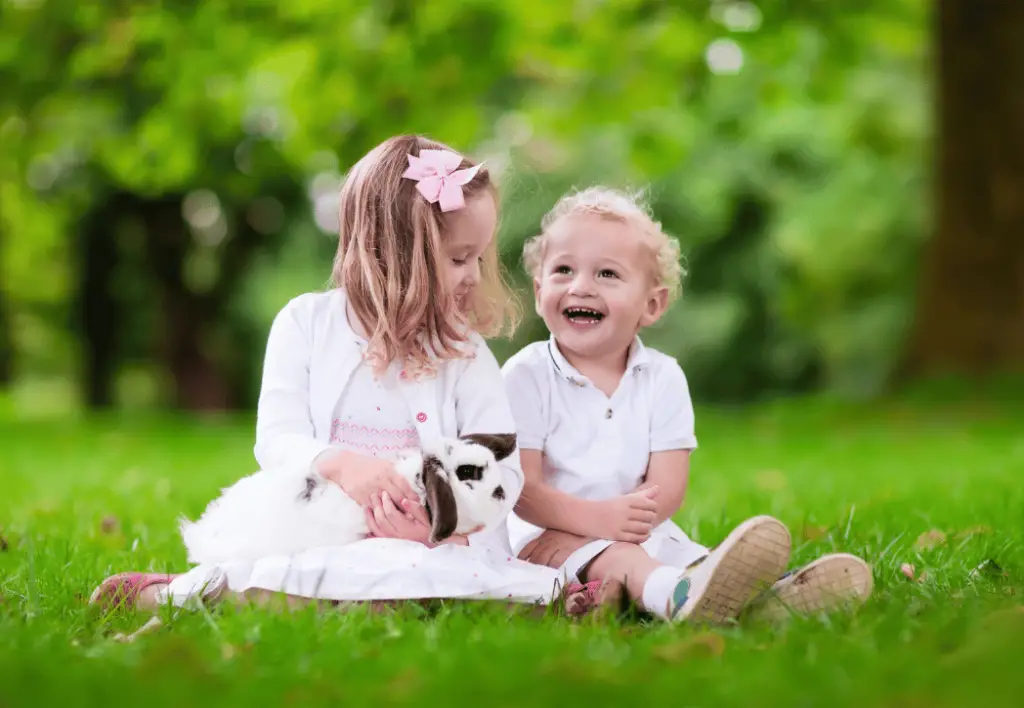
Playing and Bonding
Rabbit play is an essential component of their social behavior, helping to establish strong bonds between companions. Bunny rabbits enjoy playing with toys, such as balls and chewable items, as it engages their natural curiosity and provides mental stimulation. Playing together also strengthens the bond between rabbits and their human caregivers, with interactive toys being a popular choice to encourage joint playtime.
Nudging and Licking
Rabbits also express their social connection through nudging and licking. Nudging is often a sign of affection or a request for attention from their companion.
Additionally, rabbits may groom each other through licking, an action that demonstrates a strong bond and trust between bunnies. It is essential to observe your pet rabbits’ interactions closely to ensure nudging doesn’t escalate into aggression or biting.
Hopping and Binkying
A happy rabbit is known for its distinctive hopping and binkying movements. Binkying involves the rabbit leaping into the air, twisting its body, and clicking its heels together, indicating pure joy and happiness.
Hopping, or dancing, often occurs when rabbits are excited or exploring their environment, and serves as another sign of contentment.
Understanding rabbit behavior requires observing their social interactions, play habits, and physical movements. By familiarizing yourself with these behaviors, you can better comprehend your rabbits’ needs and promote a healthy, happy environment for them.
Aggressive and Territorial Behavior
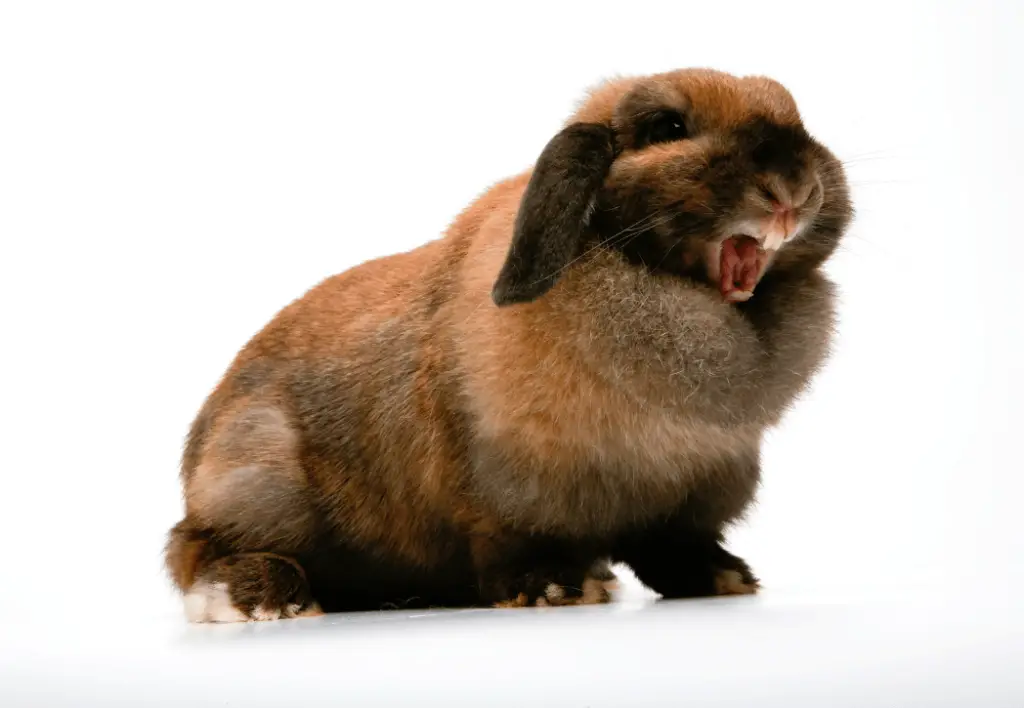
Rabbits can sometimes display aggressive or territorial behavior. This is usually due to factors such as fear, pain, or hormonal changes. Understanding these behaviors can help rabbit owners better address and prevent issues related to aggression in their rabbits.
Boxing and Lunging
Rabbits may exhibit behaviors such as boxing and lunging when they feel threatened or territorial. Lunging involves the rabbit moving suddenly towards something or someone while boxing involves swiping front paws or hitting out. Aggressive behavior like this is often influenced by hormonal changes, and spaying or neutering can help reduce these behaviors.
Growling and Grunting
Growling and grunting are signs of discomfort or distress in rabbits. This can be due to pain, illness, or fear. These noises are often accompanied by thumping or stomping, wherein the rabbit uses their hind legs to hit the ground, sending a signal of danger or annoyance. Monitoring your rabbit’s health and providing a safe and comfortable environment can help ease growling and grunting behaviors.
Marking Territory
Rabbits, like many other animals, have a tendency to mark their territory. This can be done in several ways, such as spraying urine, circling another rabbit, or scratching and digging in their environment. Chinning, wherein the rabbit rubs their chin to release scent glands, is also a common way to mark territory.
Some rabbits may also display mating behavior, such as circling and nipping, which can be confused with aggressive behavior. Establishing separate spaces for each rabbit and monitoring interactions can help manage territorial behaviors in rabbits and reduce the likelihood of aggression.
When raising rabbits in a multi-rabbit household, it’s important to respect their natural dominance hierarchy and provide plenty of personal space to each individual rabbit. Regular cleaning and maintenance of the rabbit’s living environment can help reduce the need for territorial marking.
Rabbit Health and Physiology
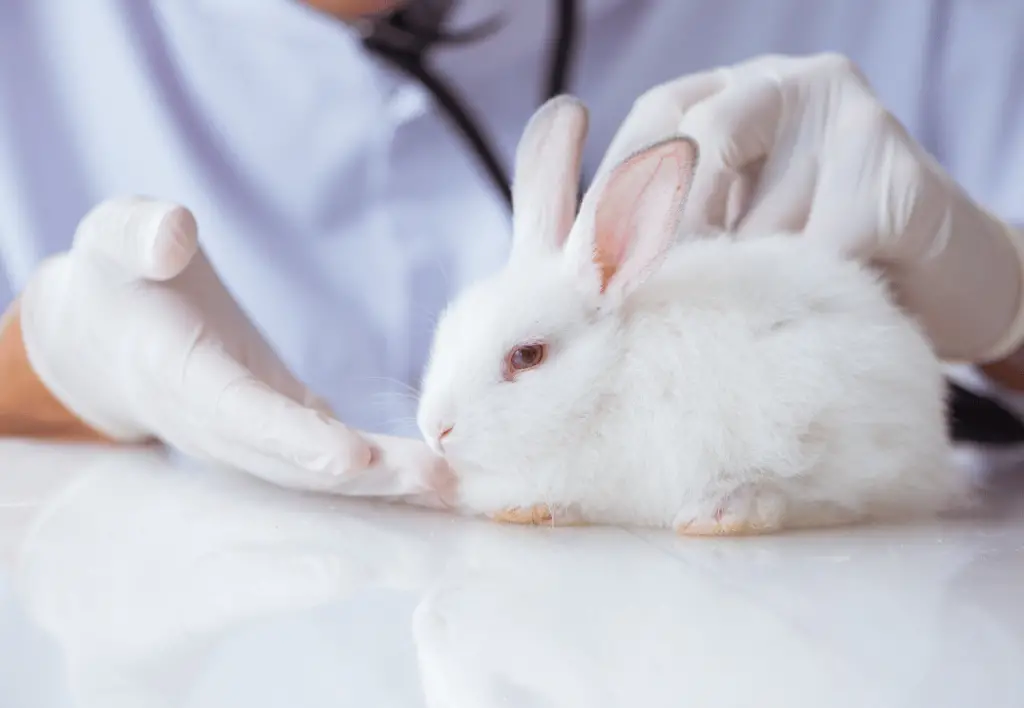
Tooth Grinding and Droppings
Rabbits have a natural behavior of grinding their teeth, which helps maintain healthy teeth and gums. However, loud teeth grinding can be a sign of pain or discomfort.
Observing your rabbit’s droppings is also essential to monitor their health. Healthy droppings are typically small, round, and firm, while abnormal droppings can indicate a change in diet or illness.
Rabbit Vocalizations and Flopping
Rabbits communicate through various vocalizations and body language. Common sounds include soft grunts, hums, and squeaks. A rabbit flop, in which the rabbit lays down on its side or flips over, is a sign of contentment and relaxation.
Fur and General Health

A rabbit’s fur can be an indicator of its overall health. Healthy rabbits usually have clean, smooth, and soft fur. However, changes in fur quality, such as excessive shedding or noticeable bald spots, can indicate health issues or stress. Regular grooming can help keep your rabbit’s fur in good condition and allow you to monitor their health.
Recognizing Illness through Changes in Behavior
Changes in a rabbit’s behavior may signal potential health problems. For example, a rabbit that is usually active and social may become lethargic and withdrawn when not feeling well. Additionally, changes in appetite or excessive thirst can indicate an underlying health issue. It’s essential to keep a close eye on your rabbit’s behavior and consult a veterinarian if you notice anything unusual.
The Effect of Spaying on Rabbit Behavior
Spaying a female rabbit can significantly impact its behavior, as it reduces hormonal fluctuations and aggressive tendencies. Spayed rabbits are usually calmer and more trainable, making them easier to manage as pets. Furthermore, spaying can prevent uterine problems and reduce the risk of mortality during surgery. Careful monitoring and consistent training can help your rabbit adjust to their new behavior after the procedure.
Housing and Training
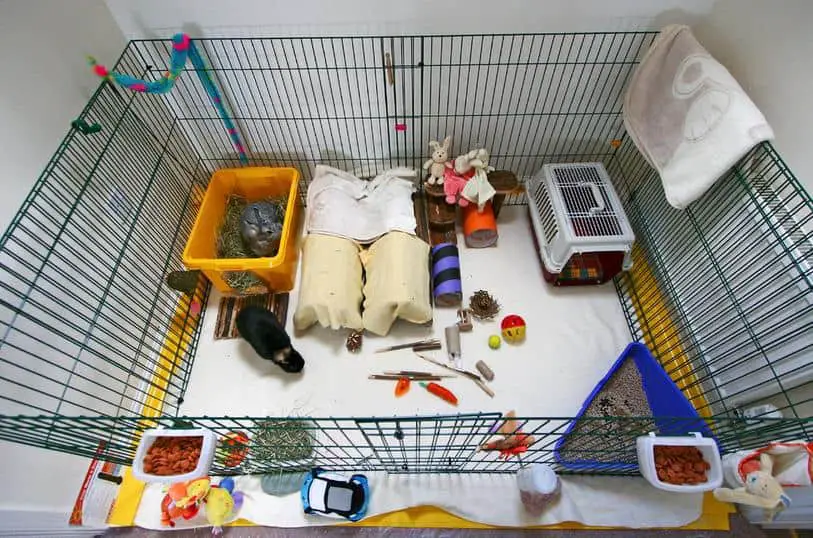
Litter Training and Box Habits
Rabbit behavior can be easily managed with proper litter training. House rabbits, especially those that have been neutered, are more likely to adapt to a latrine system without much difficulty. To litter train a rabbit, it is essential to understand its natural instincts and provide an appropriate litter box setup.
Rabbits will typically use a corner of their enclosure for waste elimination, so placing a litter box in that area can help accelerate the training process. It is crucial to monitor their litter box habits and make adjustments if needed, as some rabbits may develop unusual behaviors like mounting or nipping when stressed.
Toys and Enrichment
Toys and enrichment play a vital role in promoting normal rabbit behavior and well-being. Rabbits enjoy a variety of rabbit play activities, including burrowing, chinning, and the “bunny 500,” which are running and hopping in circles.
Providing toys, cardboard boxes, and tunnels can help prevent boredom and encourage natural behaviors like periscoping, where a rabbit stands on its hind legs to survey its surroundings. Be mindful of rabbit vocalizations, as a shrill scream may signify pain or distress and can often indicate a need for changes in their environment.
Proper Rabbit Housing
Creating a comfortable and stimulating living space for rabbits is essential for their overall health and happiness. An adequately-sized enclosure should have enough room for the rabbit to move around freely, stretch, and relax. Providing safe hiding spots, such as boxes or burrows, can help alleviate stress and let the rabbit establish personal boundaries.
Ensure proper ventilation and appropriate bedding within the enclosure to minimize odor and maintain cleanliness. Regularly check for any signs of nipping or other aggressive behaviors, as these may indicate that changes to the housing setup are needed. By understanding rabbit behavior and catering to their needs, you can create an enriching and pleasant environment for your rabbit companion.
Communication and Social Behavior
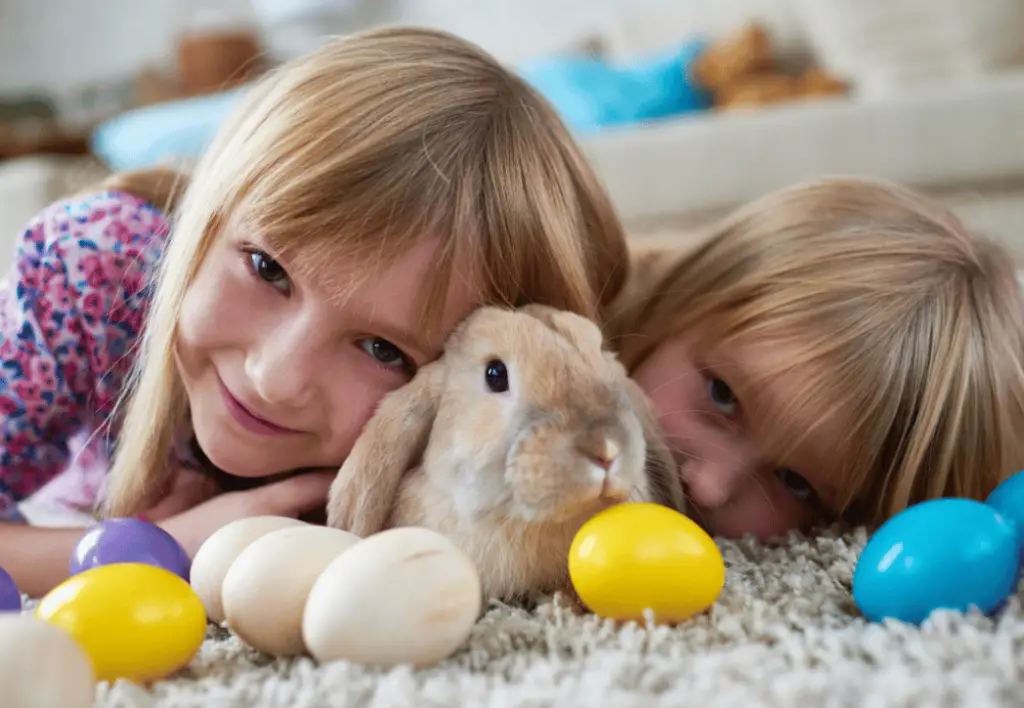
Understanding Rabbit Language: Visual, Auditory, and Tactile Signals
Rabbits use a combination of visual, auditory, and tactile signals to communicate with each other and their environment. Visual signs include body posture, ear positioning, and facial expressions, which can help convey feelings such as happiness, fear, or aggression. For example, a rabbit performing a binky signals happiness and playfulness.
Auditory signals, on the other hand, include a variety of vocalizations like grunts, purrs, and even screams. These sounds can indicate excitement, contentment, or distress. Tactile communication involves physical touch, such as grooming or licking, which can show affection, bonding, or submission.
Social Structure and Hierarchies in Rabbit Colonies
Rabbit colonies consist of multiple social groups, with each group having its own territory and members. These groups generally have up to three bucks (males), and five does (females) that maintain a specific hierarchical structure. The dominance hierarchy within these groups is established through various behaviors, including grooming, physical displays, and submission or aggressive postures (source).
This hierarchy is essential in maintaining order within the colony, as it aids in resource allocation, territory defense, and reproductive success. Subordinate rabbits typically groom or show submission to more dominant individuals in the group, ensuring stability and cooperation among members.
Bonding and Mating Behaviors

Bonding is a critical aspect of rabbit socialization, as it helps to establish trust, ensure group stability, and maintain the colony’s overall health. Rabbits may form strong attachments with one another, which can encompass grooming, snuggling, and playing together. Social grooming, in particular, is a vital bonding behavior, as it not only helps to maintain good hygiene but also reinforces the hierarchy within the group.
Mating behaviors in rabbits involve a series of courtship rituals, such as chasing, circling, and the male performing a series of high jumps. These behaviors ultimately lead to copulation and, eventually, the birth of offspring. Ensuring the successful reproduction and continuation of the colony is a focal point in rabbit social behavior and communication.
Rabbit Reproduction and Mating Behavior
Courtship and Mating Rituals
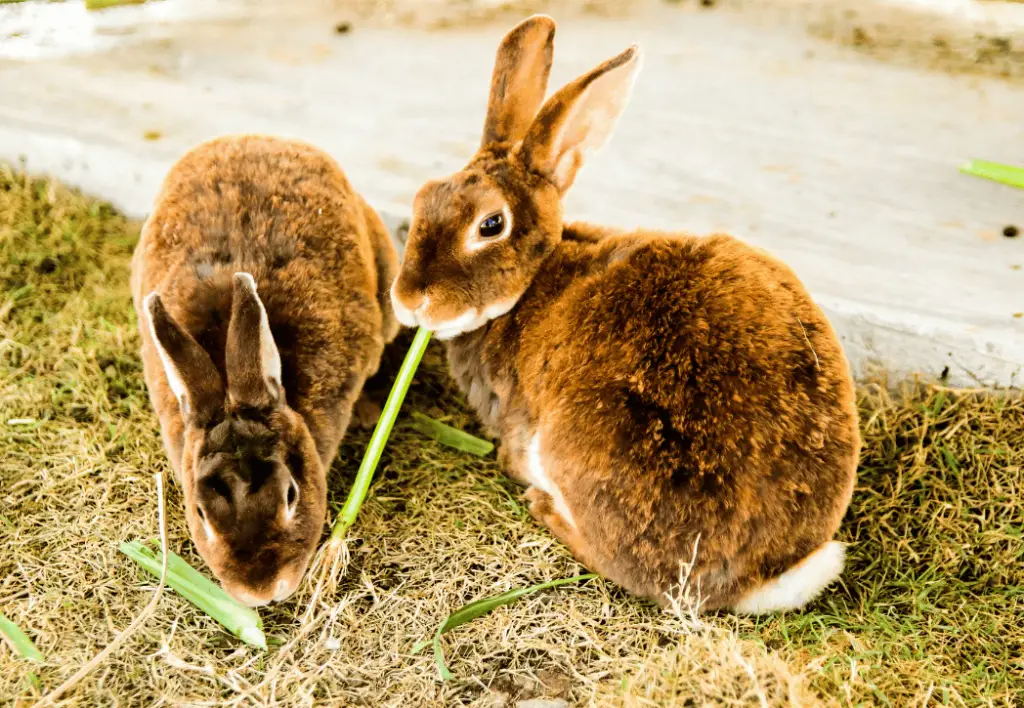
Rabbits, known for their rapid reproduction habits, engage in interesting courtship and mating rituals. Males (bucks) and females (does) become sexually mature at varying ages depending on their size and breed, with medium to large-sized rabbits maturing at 4 to 4.5 months, giant breeds at 6 to 9 months, and smaller breeds at 3.5 to 4 months.
When a doe is receptive, she may display swelling of the vulva and a reddish-purple or pinkish-purple color. During courtship, rabbits often perform binkies, which are playful, energetic jumps and twists.
Males may engage in digging behavior to impress the females. Once the couple is ready to mate, the male mounts the female, and ovulation in the female rabbit is triggered by sexual intercourse.
Nesting and Parental Care Behavior
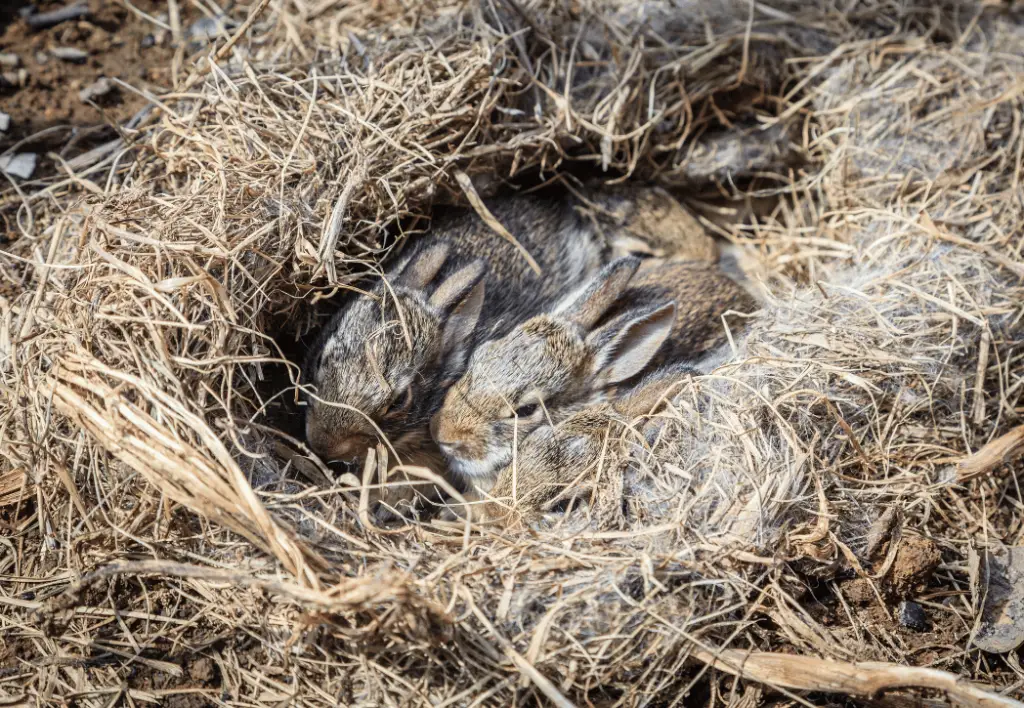
When a pregnant doe is preparing for the arrival of her offspring, she may display nesting behavior. She will find a suitable location and gather materials to create a secure, comfortable nest. This includes using hay, grass, and even pulling fur from her own body to provide warmth for her newborns.
After the newborns (kits) are born, they are initially blind, deaf, and hairless. The mother rabbit will nurse her offspring and provide the necessary care. However, maternal instincts can vary among rabbits, and some does may require monitoring by a rabbit veterinarian to ensure proper care of the kits. It is also important to consider spaying and neutering pet rabbits to control their population and maintain their health. This can help minimize complications associated with reproduction and prevent unwanted behaviors, such as aggression and territorial marking.
Rabbit reproduction and mating behavior showcase interesting courtship rituals, nest building, and parental care. Observing these behaviors in pet rabbits can provide valuable insight into their natural instincts and contribute to responsible pet ownership through spaying or neutering.
Environmental Influence on Rabbit Behavior
Impact of Housing Conditions on Behavior
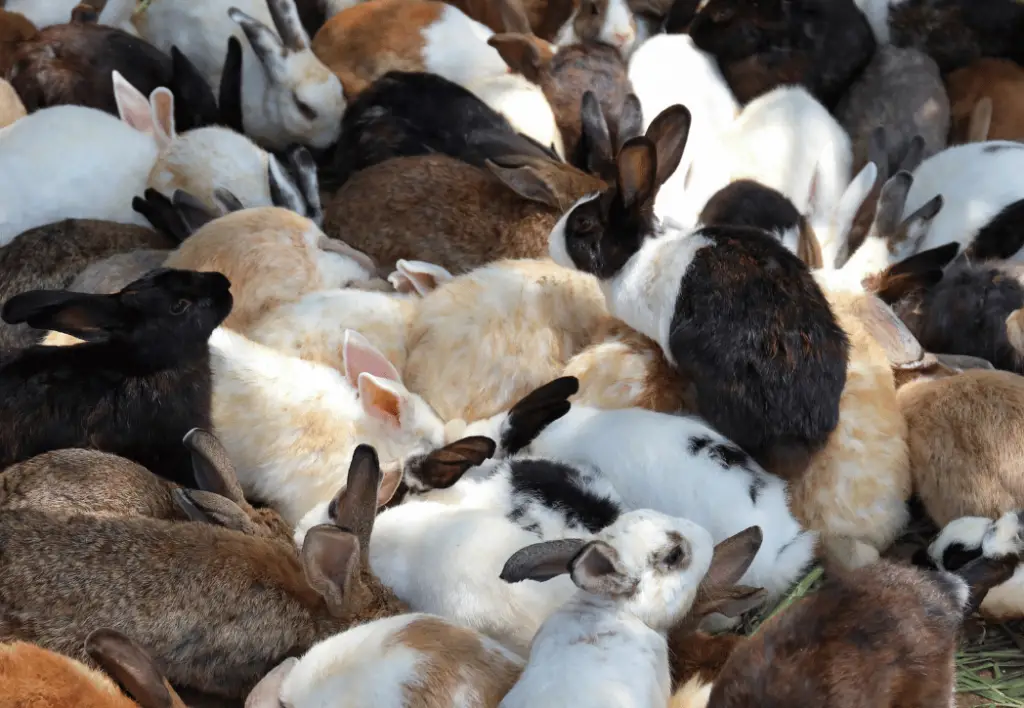
Rabbit behavior can be significantly impacted by their housing conditions. As a prey species, rabbits are naturally cautious and alert in their environment. Providing ample space for rabbits to move, explore, and establish territories is essential to their well-being. Inadequate housing can lead to increased stress levels and the development of negative behaviors, such as aggression or over-grooming.
One study observed the behavior of rabbits in enriched cage systems compared to conventional cages. The enriched cages provided rabbits with shelter and raised areas to rest. The study found that rabbits in enriched cages showed less stress-related behaviors and better overall welfare.
The Role of Enrichment in Promoting Healthy Behavior
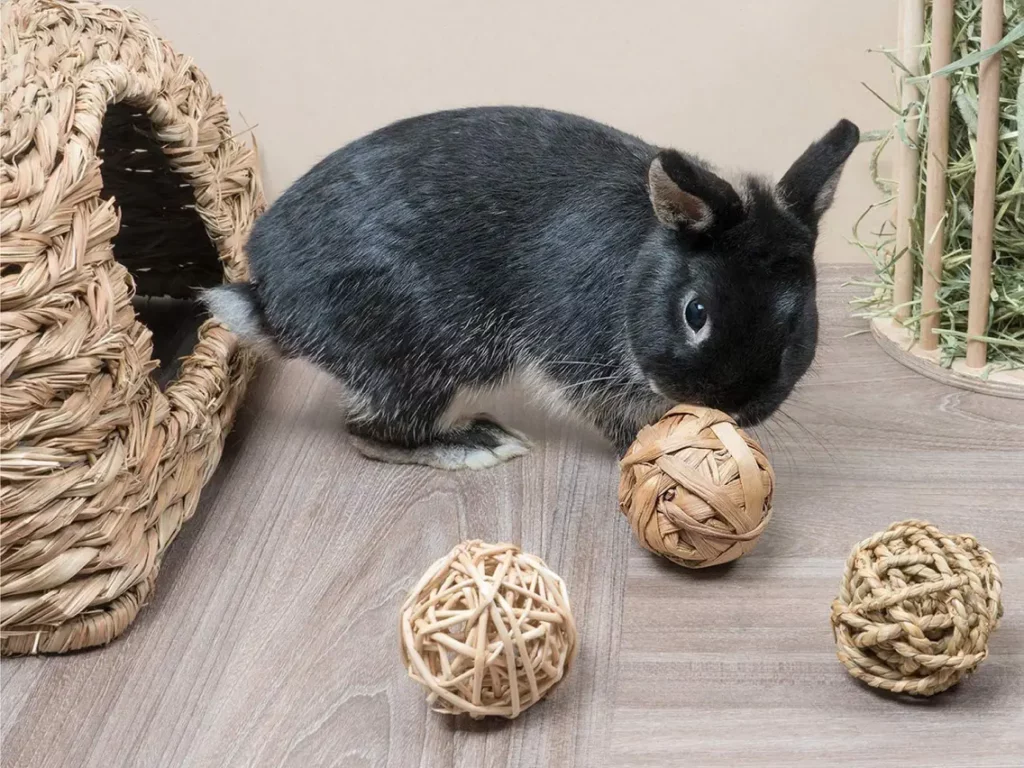
Environmental enrichment plays a crucial role in promoting healthy behavior in rabbits. By providing a variety of stimuli, such as toys, hiding spots, and foraging opportunities, environmental enrichment helps prevent boredom, reduce stress, and encourage natural behaviors. A study on rabbits’ behavior, serum hormone levels, and cecal microbiota found that enrichment positively influenced these factors, further highlighting its importance.
There are several ways to provide environmental enrichment for rabbits:
- Toys: Include a variety of toys made from different materials, such as wood, paper, and cardboard.
- Hiding spots: Provide rabbits with safe spaces to hide, such as wooden boxes or tunnels.
- Foraging opportunities: Create opportunities for rabbits to search for food by hiding treats, providing hay racks, or using feeding balls.
In summary, the environment has a significant influence on rabbit behavior. Appropriate housing conditions and environmental enrichment are crucial for supporting rabbits’ mental and physical well-being.
Behavioral Differences Among Rabbit Breeds
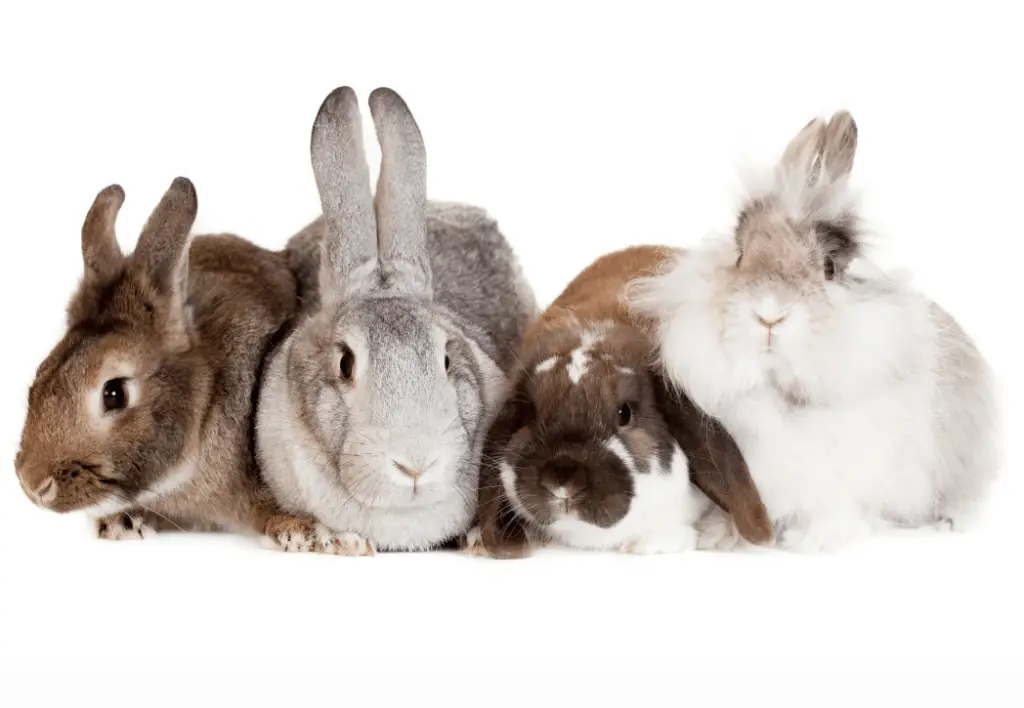
Breed-Specific Traits and Behaviors
Rabbit breeds exhibit various traits and behaviors unique to their breed, although some behaviors may be common among rabbits in general. For example, the Netherland Dwarf rabbit is known for its energetic and playful nature, while the Flemish Giant is recognized for its calm and gentle demeanor.
Some rabbit breeds, such as the Lionhead, have a curious and friendly personality which makes them suitable pets for families with children. On the other hand, some breeds like the Belgian Hare are more independent and may require more space due to their active nature.
It is also important to consider the grooming requirements of each breed. Long-haired breeds, such as the Angora, need regular grooming to prevent matting and skin issues, which should be factored into the owner’s ability to care for the rabbit.
Selecting the Right Rabbit Breed Based on Behavior
When choosing a rabbit breed, it’s essential to consider the potential rabbit’s behavior and how it aligns with the owner’s lifestyle and expectations. For families with young children or first-time rabbit owners, a friendly, easy-going breed like the Mini Lop may be a good fit.
For those who have experience with rabbits or prefer a more independent pet, breeds such as the Rex or Belgian Hare may be suitable. It is also important to consider the rabbit’s size and housing requirements, as some breeds will require more space than others.
When selecting a rabbit breed, it’s a good idea to visit local shelters or breeders to meet different rabbits and observe their behavior firsthand. This can help potential owners get a better idea of the characteristics associated with specific breeds and make a more informed decision.
Aging and Behavior
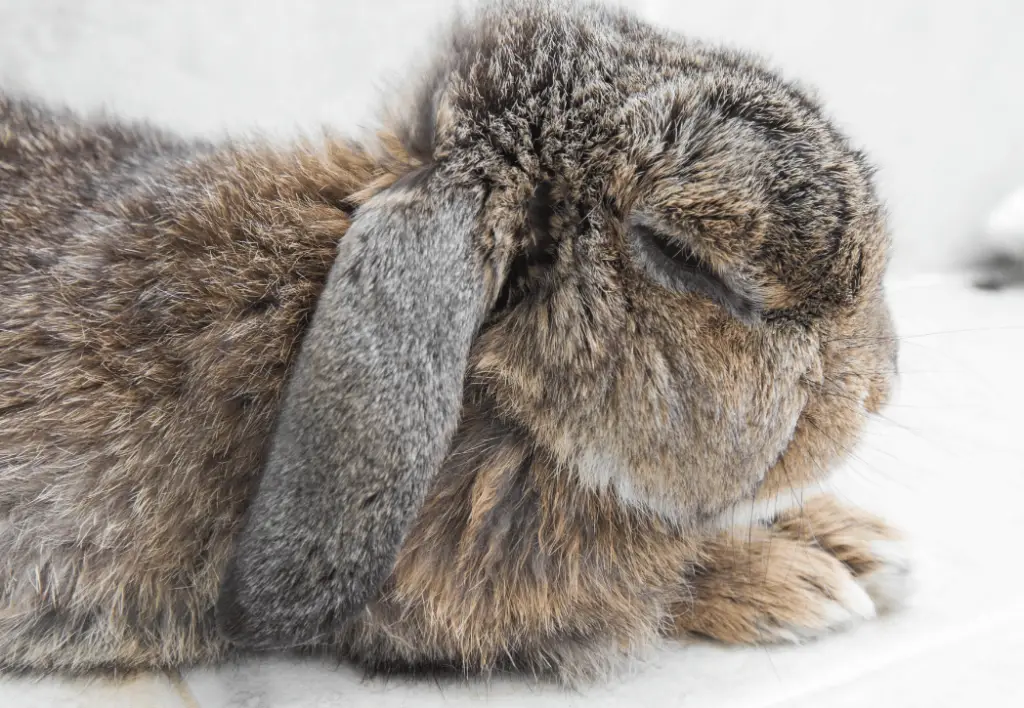
Changes in Behavior as Rabbits Age
As rabbits grow older, their behavior tends to change in various ways. Age is a significant factor influencing a rabbit’s behavior once factors such as breed, neutering/spaying, living conditions, and healthcare have been taken into account. Senior rabbits generally move a bit slower compared to their younger counterparts, but they remain able and willing to learn new routines. As they age, rabbits may also experience a decrease in muscle tone, activity levels, mobility, and agility.
In addition to physical changes, older rabbits may also exhibit less lustrous coats and diminished functionality in senses such as hearing and sight. Their ability to adapt to stressful situations or changes in routine may lessen, and they may become more particular about what they want. Furthermore, rabbits may sleep more as they age, but they still wake up eager for interaction and exploration.
Special Considerations for Senior Rabbits
Caring for an aging rabbit requires some special considerations to maintain its health and well-being. These tips can make a difference in the quality of life for older rabbits:
- Adjust their living space: Senior rabbits may experience difficulties getting into their litter boxes, so cutting down one of the sides can make it easier for them to access.
- Monitor their diet: As with any pet, a proper diet is essential as they age. Keep track of their eating habits and make appropriate adjustments to ensure they receive the necessary nutrients.
- Watch for signs of pain or discomfort: Older rabbits may be more prone to health issues, so monitor them closely for any signs of pain, discomfort, or changes in behavior.
- Provide mental stimulation: While older rabbits may be less agile, they still enjoy mental stimulation. Offer various toys and puzzles to keep their minds active and engaged.
- Regular vet check-ups: Maintaining a good relationship with your veterinarian is crucial. Regular check-ups can help identify any potential health issues early on, allowing for prompt treatment.
Frequently Asked Questions
Leo, a novice urban farmer and avid writer hailing from Chicago, Illinois, finds his joy and inspiration in the company of rabbits. His affection for these cuddly creatures started when he was gifted a Mini Rex, named Poe, on his 18th birthday. Poe soon became a source of comfort, companionship, and surprisingly, creative inspiration. He soon expanded his brood to include three more rabbits of different breeds, each with their own engaging tale.
